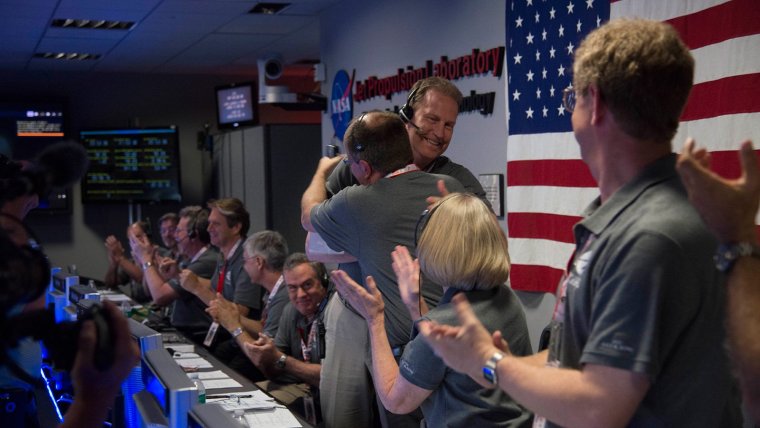| News / Space News |
Juno Spacecraft in Orbit Around Mighty Jupiter
NASA | JULY 5, 2016
After an almost five-year journey to the solar system's largest planet, NASA's Juno spacecraft successfully entered Jupiter's orbit during a 35-minute engine burn. Confirmation that the burn had completed was received on Earth at 8:53 pm. PDT (11:53 p.m. EDT) Monday, July 4.

The Juno team celebrates at NASA's Jet Propulsion Laboratory in Pasadena, California. ![]()
Over the next few months, Juno's mission and science teams will perform final testing on the spacecraft's subsystems, final calibration of science instruments and some science collection.
Juno's principal goal is to understand the origin and evolution of Jupiter. With its suite of nine science instruments, Juno will investigate the existence of a solid planetary core, map Jupiter's intense magnetic field, measure the amount of water and ammonia in the deep atmosphere, and observe the planet's auroras.
The mission also will let us take a giant step forward in our understanding of how giant planets form and the role these titans played in putting together the rest of the solar system. As our primary example of a giant planet, Jupiter also can provide critical knowledge for understanding the planetary systems being discovered around other stars.
YOU MAY ALSO LIKE



